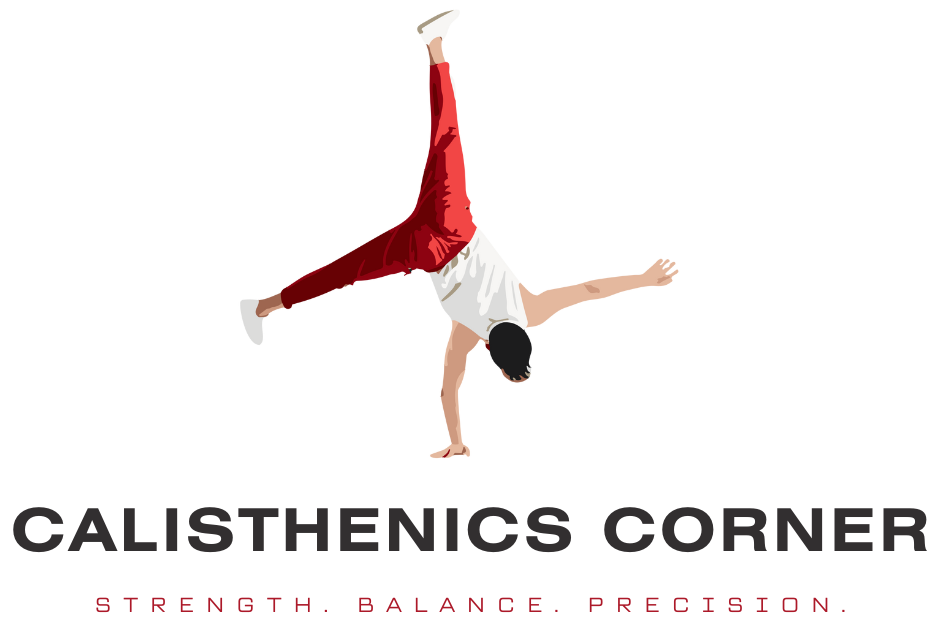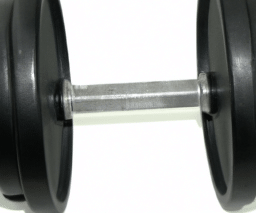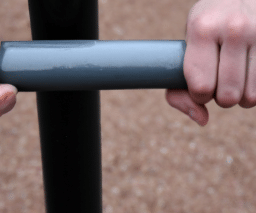Are you torn between choosing calisthenics or weight training for your fitness routine? The great news is that you don’t have to choose one over the other! In fact, it is entirely okay to incorporate both calisthenics and weight training into your workouts. This article explores the benefits of combining these two forms of exercise, highlighting how they can complement each other and help you achieve your fitness goals more effectively. So, let’s explore the world of calisthenics and weight training and discover how they can work hand in hand to boost your overall fitness level.
Benefits of Calisthenics
Improved bodyweight strength
Calisthenics is an excellent way to improve your bodyweight strength. By utilizing your own body as resistance, you engage multiple muscle groups simultaneously, resulting in overall strength gains. Movements such as push-ups, pull-ups, and squats target your chest, back, arms, and legs, allowing you to build functional strength that translates into everyday activities.
Increased flexibility and mobility
Another significant benefit of incorporating calisthenics into your fitness routine is improved flexibility and mobility. Many calisthenics exercises require a wide range of motion, which helps lengthen and stretch your muscles. Over time, this can improve your flexibility, allowing you to move more freely and perform exercises with better form.
Enhanced core stability
Calisthenics exercises heavily engage your core muscles, leading to enhanced stability and balance. Movements like planks, mountain climbers, and hollow holds activate not only your abs but also the muscles in your lower back, hips, and pelvis. Strengthening your core can improve your posture, reduce lower back pain, and increase overall body control.
Improved endurance and cardiovascular health
Calisthenics workouts often involve high-repetition exercises and circuits, which can help improve your endurance and cardiovascular health. The continuous movement and elevated heart rate during calisthenics routines provide an effective cardiovascular workout. Regular calisthenics training can increase your lung capacity, boost your stamina, and improve your overall cardiovascular fitness.
Benefits of Weight Training
Increased muscle mass and strength
Weight training is a popular method for building muscle mass and increasing overall strength. Incorporating free weights, resistance machines, or weighted exercises can help stimulate muscle growth and enhance muscle fiber recruitment. By progressively increasing the weight you lift, your muscles adapt and grow stronger, resulting in increased muscle mass.
Improved bone density and joint health
Weight training also offers benefits beyond muscle development. Regular weightlifting can improve bone density, reducing the risk of osteoporosis and fractures. Additionally, it can strengthen the connective tissues around joints, providing more stability and preventing injuries. Weight training can be particularly beneficial for individuals at risk of conditions like arthritis or osteoarthritis.
Enhanced metabolism for weight loss
One of the significant advantages of weight training is its impact on metabolism. Building muscle through weightlifting can increase your resting metabolic rate, meaning you burn more calories even when at rest. This can contribute to weight loss or weight maintenance, as a higher metabolic rate allows you to burn more calories throughout the day.
Improved balance and coordination
Weight training exercises often require stability and coordination, which can lead to improved balance and coordination skills. Exercises like lunges, deadlifts, and single-leg movements engage the muscles responsible for balance, helping you develop better control over your body. Increased balance and coordination can enhance your performance in various activities and reduce the risk of falls, particularly in older adults.
Potential Overlap and Complementarity
Similarities in muscle activation and development
While calisthenics and weight training may seem different on the surface, they share similarities in muscle activation and development. Both forms of exercise involve resistance and cause muscles to contract. Calisthenics uses bodyweight as resistance, while weight training utilizes external weights or resistance machines. Both methods can stimulate muscle growth and development, albeit with varying degrees of intensity.
Both contribute to overall fitness
Combining calisthenics and weight training in your fitness routine can offer a well-rounded approach to overall fitness. Calisthenics focuses on functional movements and bodyweight strength, enhancing your body’s ability to perform everyday activities. Weight training, on the other hand, targets specific muscle groups and promotes muscle hypertrophy, strength, and power. By incorporating both, you can address various aspects of fitness to achieve a comprehensive level of athleticism.
Combining calisthenics and weight training for optimal results
By incorporating both calisthenics and weight training into your workout regimen, you can enjoy the unique benefits of each while maximizing your results. Calisthenics can provide a solid foundation of bodyweight strength and mobility, while weight training allows you to progressively overload your muscles for increased strength and muscle growth. Creating a balanced program that includes both can lead to optimal results in terms of overall strength, muscle development, and fitness.
Considerations for Combining Calisthenics and Weight Training
Correct progression and form for injury prevention
When combining calisthenics and weight training, it is crucial to focus on correct progression and form to prevent injuries. Progressing too quickly or using improper form can put excessive strain on your joints and muscles, increasing the risk of strains, sprains, or even more severe injuries. Begin with proper form and gradually progress the intensity and difficulty of exercises to avoid overloading your body.
Balancing volume, intensity, and recovery
Finding the right balance between volume, intensity, and recovery is essential when combining calisthenics and weight training. It is crucial to allow your body enough time to recover and adapt to the demands placed upon it. Listen to your body and make sure to include rest days or active recovery days in your workout schedule. Balancing the volume and intensity of your workouts will help prevent overtraining and ensure optimal progress.
Individual fitness goals and preferences: strength, hypertrophy, functional fitness
Consider your individual fitness goals and preferences when combining calisthenics and weight training. Determine whether your primary focus is on strength, muscle hypertrophy, functional fitness, or a combination of these. Adjust the ratio of calisthenics to weight training exercises according to your goals. For example, if your aim is to build muscle mass, you may focus more on weight training exercises, while functional fitness enthusiasts may prioritize calisthenics movements.
Sample Training Program
Weekly schedule incorporating both calisthenics and weight training
To help you get started, here is a sample training program that incorporates both calisthenics and weight training. Remember to adjust the intensity and volume according to your fitness level and goals.
- Monday: Calisthenics
- Push-ups (3 sets of 12 reps)
- Bodyweight squats (3 sets of 15 reps)
- Plank holds (3 sets of 30 seconds)
- Tuesday: Weight Training
- Barbell bench press (3 sets of 8 reps)
- Leg press (3 sets of 10 reps)
- Dumbbell shoulder press (3 sets of 12 reps)
- Wednesday: Rest or active recovery
- Thursday: Calisthenics
- Pull-ups (3 sets of 8 reps)
- Lunges (3 sets of 12 reps per leg)
- Russian twists (3 sets of 15 reps)
- Friday: Weight Training
- Deadlifts (3 sets of 6 reps)
- Dumbbell bicep curls (3 sets of 10 reps)
- Cable tricep pushdowns (3 sets of 12 reps)
- Saturday: Calisthenics
- Handstand practice (3 sets of 30 seconds)
- Bicycle crunches (3 sets of 20 reps)
- Squat jumps (3 sets of 10 reps)
- Sunday: Rest or active recovery
Different exercises targeting different muscle groups
Incorporate a variety of exercises that target different muscle groups to ensure a well-rounded training program. By diversifying your exercises, you engage various muscles and prevent imbalances. For example, include exercises like push-ups, pull-ups, squats, lunges, and core exercises to work different areas of your upper body, lower body, and core.
Variation in intensity and workload
To continue making progress and challenging your body, it is essential to vary the intensity and workload of your training sessions. This can be achieved by adjusting the number of repetitions, sets, weight, or by incorporating different exercise variations. By continually challenging yourself, you promote muscle growth, strength development, and prevent plateaus in your fitness journey.
Adapting to Individual Needs and Limitations
Modifications for beginners and advanced athletes
Both calisthenics and weight training can be adapted to suit individuals of varying fitness levels. Beginners can start with modified or assisted versions of exercises and gradually progress as they become more comfortable and gain strength. Advanced athletes can incorporate variations that increase the difficulty or use heavier weights to maintain a challenge. It is essential to choose exercises and modifications that align with your current fitness level and allow for progression over time.
Customizing workouts based on injury history or restrictions
Individuals with injury history or physical restrictions should take extra precautions when combining calisthenics and weight training. Consult with a healthcare professional or experienced trainer who can provide guidance tailored to your specific needs. Customizing workouts to accommodate injuries or restrictions may involve avoiding certain exercises, modifying range of motion, or incorporating alternative exercises that minimize strain on specific areas.
Seeking professional guidance for personalized training plans
For individuals seeking personalized training plans that incorporate both calisthenics and weight training, seeking professional guidance can be beneficial. A qualified fitness trainer or strength and conditioning coach can assess your current fitness level, discuss your goals, and create a training program designed specifically for you. Their expertise can ensure proper form, injury prevention, and optimal progression based on your unique needs and limitations.
Potential Risks and Precautions
Overtraining and risk of injury
Combining calisthenics and weight training can increase the risk of overtraining, especially if intensity, volume, or recovery is not adequately balanced. Overtraining can lead to fatigue, decreased performance, decreased immune function, and an increased risk of injuries. It is crucial to listen to your body, prioritize rest and recovery, and avoid excessive training without giving your body enough time to adapt and heal.
Gradual progression and adequate rest periods
To minimize the risk of injuries, gradual progression and adequate rest periods are essential. Progressing too quickly or not allowing enough time for recovery can overload your muscles and joints, making them more susceptible to injury. Gradually increase the intensity, volume, or difficulty of exercises over time, and ensure you include rest days or active recovery days in your training plan to allow your body to recover and adapt.
Proper warm-up and cooldown routines
Prioritizing warm-up and cooldown routines is crucial when combining calisthenics and weight training. A proper warm-up prepares your body for the upcoming physical activity by increasing blood flow, elevating your body temperature, and activating the muscles you will be working. Similarly, cooling down with stretches and mobility exercises after your workout helps reduce muscle soreness and prevents tightness. Include dynamic warm-up exercises and static stretches in your routine to minimize the risk of injury.
Listening to the body and adapting accordingly
Perhaps the most vital precaution to take is listening to your body and adapting your training accordingly. Pay attention to any pain, discomfort, or signs of overexertion. It is essential to distinguish between the sensation of challenging your body and pushing yourself beyond your limits. If something feels off or you experience persistent pain, it may be necessary to modify your training, consult a professional, or take a break altogether. Prioritizing your body’s signals and adjusting your training accordingly can help prevent injuries and ensure continued progress.
Monitoring Progress and Adjusting Training
Tracking strength gains and muscle development
When combining calisthenics and weight training, it is essential to monitor your progress to determine the effectiveness of your training program. Track improvements in strength by regularly testing your ability to perform exercises with better form, increased repetitions, or higher weights. Additionally, monitor changes in muscle development by taking photos or measurements of specific muscle groups. Tracking progress helps you identify areas of improvement and adjust your training accordingly.
Periodic reassessment of goals and adjusting training accordingly
Periodically reassessing your goals and adjusting your training accordingly is crucial to ensure continued progress and prevent plateaus. As you achieve your initial goals, set new ones to keep yourself motivated and engaged. Revisit your training program regularly, consider implementing new exercises, adjusting the intensity or volume, or incorporating different training techniques to challenge your muscles and prevent stagnation.
Avoiding stagnation and plateaus through regular program updates
Stagnation and plateaus can occur when your body becomes accustomed to a specific training routine, resulting in slowed progress. To avoid this, regularly update your training program to introduce new exercises, change training variables, or experiment with different training methods. By keeping your body guessing and introducing new challenges, you can break through plateaus and continue making strides in your fitness journey.

Final Thoughts
Combining calisthenics and weight training can offer numerous benefits, helping you achieve a well-rounded fitness routine. By incorporating both methods into your workouts, you can improve bodyweight strength, increase muscle mass, boost endurance, enhance flexibility, and achieve overall fitness. Remember to prioritize proper form, progress gradually, and listen to your body to avoid injuries and sustain long-term progress. Customizing your training based on your goals, preferences, and individual needs can help you create a balanced and enjoyable fitness routine that supports your overall health and well-being. Embrace the process, stay consistent, and enjoy the journey to a fitter and stronger you!








